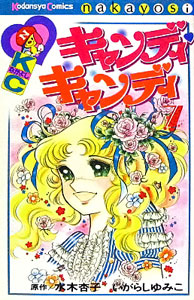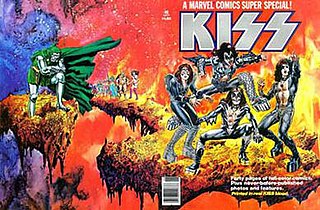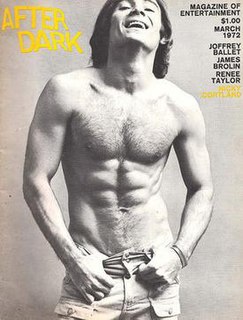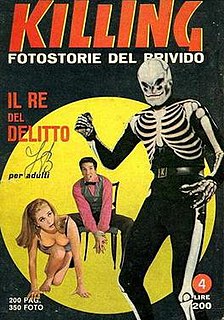
Karl Edward Wagner was an American writer, poet, editor, and publisher of horror, science fiction, and heroic fantasy, who was born in Knoxville, Tennessee and originally trained as a psychiatrist. He wrote numerous dark fantasy and horror stories. As an editor, he created a three-volume set of Robert E. Howard's Conan the Barbarian fiction restored to its original form as written, and edited the long-running and genre-defining The Year's Best Horror Stories series for DAW Books. His Carcosa publishing company issued four volumes of the best stories by some of the major authors of the so-called Golden Age pulp magazines. He is possibly best known for his creation of a series of stories featuring the character Kane, the Mystic Swordsman.

Mayfair is a British adult magazine for men. Founded in 1966, it was designed as a response to US magazines such as Playboy and Penthouse, the latter of which had recently launched in the UK. For many years, it claimed the largest distribution of any men's magazine in the UK. It is a softcore magazine, and thus is available in newsagents, although some larger retailers require a modesty bag to hide the cover.

Candy Candy is a Japanese series created by Kyoko Mizuki. The main character, Candice "Candy" White Ardley is a blonde girl with freckles, large emerald green eyes and long hair, worn in pigtails with bows. Candy Candy first appeared in a prose novel by famed Japanese writer Keiko Nagita under the pen name Kyoko Mizuki in April 1975. When Mizuki joined forces with manga artist Yumiko Igarashi, the Japanese magazine Nakayoshi became interested in Candy Candy. The series was serialized as a manga series in the magazine for four years and won the 1st Kodansha Manga Award for shōjo in 1977. The story was adapted into an anime series by Toei Animation. There are also three animated short films.
Warren Publishing was an American magazine company founded by James Warren, who published his first magazines in 1957 and continued in the business for decades. Magazines published by Warren include After Hours, Creepy, Eerie, Famous Monsters of Filmland, Help!, and Vampirella.

Wendy PininéeFletcher, and Richard Pini are the husband-and-wife team responsible for creating the well-known Elfquest series of comics, graphic novels and prose works. They are also known as WaRP.

Paul Kupperberg is an American writer and comics editor. He is currently a writer and executive editor at Charlton Neo Comics and Pix-C Webcomics, and a contributing author with Crazy 8 Press. Formerly, he was an editor for DC Comics and executive editor of Weekly World News, as well as a writer of novels, comic books, and newspaper strips.

Marvel Comics Super Special was a 41-issue series of one-shot comic-magazines published by Marvel Comics from 1977 to 1986. They were cover-priced $1.50 to $2.50, while regular color comics were priced 30 cents to 60 cents, Beginning with issue #5, the series' title in its postal indicia was shortened to Marvel Super Special. Covers featured the title or a variation, including Marvel Super Special, Marvel Super Special Magazine, and Marvel Weirdworld Super Special in small type, accompanied by large logos of its respective features.
Howard Eugene Day was a Canadian comics artist best known for his work on Marvel Comics' Star Wars licensed series and Master of Kung Fu. He was considered a mentor by independent comic writer/artist Dave Sim.
Battlestar Galactica has been adapted to the comic book format since its inception, with no six publishers to date taking on the project of relating the story of the Colonial Fleet and their adversaries, the Cylons, at different points.
The "DC Explosion" and "DC Implosion" were two events in 1978 – the first an official marketing campaign, the second a sardonic reference to it – in which DC Comics expanded their roster of publications, then abruptly cut it back. The DC Explosion was part of an ongoing initiative at DC to regain market share by increasing the number of titles they published, while also increasing page counts and cover prices. The so-called "DC Implosion" was the result of the publisher experiencing losses that year due to a confluence of factors, and cancelling a large number of ongoing and planned series in response. The cancellations included long-running series such as Our Fighting Forces, Showcase, and House of Secrets; new series introduced as part of the expansion such as Firestorm and Steel: The Indestructible Man; and announced series such as The Vixen, which would have been the company's first title starring an African-American woman. Former flagship series Detective Comics was also considered for cancellation. Some of the material already produced for these cancelled series was used in other publications. Several of the completed stories were "published" in small quantities as two issues of Cancelled Comics Cavalcade, whose title was a reference to DC's Golden-Age Comic Cavalcade series.

After Dark was an entertainment magazine that covered theatre, cinema, stage plays, ballet, performance art, and various artists, including singers, actors and actresses, and dancers, among others. First published in May 1968, the magazine succeeded Ballroom Dance Magazine. In the late 1970s Patrick Pacheco took over the editorship from William Como and strived for a time to make the magazine a more serious critical monthly with a greater emphasis on quality writing, abandoning color printing inside and reducing photos to a few inches square. This was a reaction to Como's "eye-candy" thrust, but sales were low and in 1981 Louis Miele replaced him at the helm and returned to the full-color format with plenty of skin on show. It seemed however that the day was done for After Dark, perhaps because several newer magazines were now doing a better job of appealing to the magazine's original readership, for Miele's incarnation of After Dark folded after only a couple of years, this time permanently.
Richard Boston was an English journalist and author, a rigorous dissenter and a belligerent pacifist. An anarchist, toper, raconteur, marathon runner and practical joker, he described his pastimes as "soothsaying, shelling peas and embroidery" and argued that Adam and Eve were the first anarchists: "God gave them only one order and they promptly broke it".

Photo comics are a form of sequential storytelling that uses photographs rather than illustrations for the images, along with the usual comics conventions of narrative text and word balloons containing dialogue. They are sometimes referred to in English as fumetti, photonovels, and similar terms. The photographs may be of real people in staged scenes, or posed dolls and other toys on sets.

Hideo Azuma was a Japanese manga artist. Azuma made his professional debut in 1969 in the Akita Shoten manga magazine Manga Ō. He was most well known for his science fiction lolicon-themed works appearing in magazines such as Weekly Shōnen Champion, as well as children's comedy series such as Nanako SOS and Little Pollon. He has been called the "father of lolicon".

James Williams was an American jazz pianist.
New Media Distribution/Irjax Enterprises was a comic book distributor and publisher active from the mid-1970s to the mid-1980s. In 1978, the company's legal actions again the dominant distributor of the era, Sea Gate Distributors, widened the field for the direct market to expand. In 1982, when Irjax's distribution arm went out of business, its processing centers and warehouses formed the basis for Diamond Comics Distributors, the now-dominant comics distributor. The company's publishing arm, New Media, continued in the business until 1995. New Media mainly published periodicals for comics/fantasy/science fiction enthusiasts, including the long-running critical journal Comics Feature. Editors and writers with New Media included Carol Kalish, Richard Howell, Peter B. Gillis, Kurt Busiek, Don and Maggie Thompson, James Van Hise, Peter Sanderson, Max Allan Collins, Ron Goulart, Will Jacobs and Gerard Jones, Steve Perrin, and Roy Thomas.

Bicycling is a cycling brand published by Hearst in Easton, Pennsylvania.

BEM, originally known as Bemusing Magazine, was a British fanzine focused on comic books which was published roughly five times a year from 1973 to 1982. The brainchild of Martin Lock, BEM featured American and British comics industry news and gossip, interviews, comic reviews, essays, columns, and comic strips. Billed as "The Comics News Fanzine," BEM eventually transitioned into a professionally produced comics magazine. As time went on, the fanzine also became more of a "strip-zine," with original comics content — some of it written by Lock — increasing year by year. Notable artistic contributors to BEM over the years included Brian Bolland, Dave Gibbons, Mike McMahon, Bryan Talbot, Terry Moore, Chris Ash, and Dave Harwood.
PhotoForum Inc. is a non-profit New Zealand photography organisation founded 12 December 1973 in Wellington "dedicated to the promotion of photography as a means of communication and expression," and is also the title of its magazine, first published in February 1974.

Thorpe & Porter was a British publisher, importer, and distributor of magazines and comic books. At first, the company was known for repackaging American comics and pulp magazines for the UK market. Later on, it became a publisher of original material. The company released more than 160 comics titles in the UK, the most prominent being Classics Illustrated, MAD UK, Edgar Rice Burroughs' Tarzan of the Apes, Larry Harmon's Laurel & Hardy, House of Hammer, and Forbidden Worlds. T & P's most prominent imprints were Top Sellers Ltd. and Brown Watson. Thorpe & Porter operated from 1946 to c. 1979.












